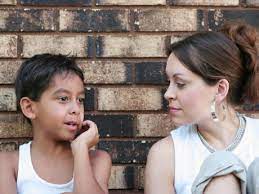1. Build Trust and Emotional Connection
Building trust is crucial in any relationship, but even more so when working with students affected by poverty. Take the time to listen to their stories, understand their struggles, and empathize with their experiences. Show genuine concern for their well-being and offer encouragement on both academic and personal levels. By creating a safe space where students feel heard and cared for, you can help establish a strong emotional connection essential for their personal growth.
2. Focus on Strengths and Resilience
When working with students impacted by poverty, it’s important to focus on their strengths and resilience rather than merely highlighting their challenges. Encourage them to identify and explore their talents, interests, and passions while acknowledging the obstacles they’ve overcome. Recognizing their achievements despite adversity will not only boost their self-esteem but also foster motivation to pursue future goals.
3. Provide Resources and Support
Students affected by poverty may lack access to necessary resources such as tutoring services, learning materials, or enrichment activities. As an educator or mentor, strive to connect these students with available resources while helping them navigate the complex system of support services. Provide individualized guidance on setting achievable goals, managing time effectively, and making informed decisions.
4. Create a Supportive Learning Environment
A supportive learning environment is essential for all students, but it becomes even more critical for those struggling with poverty. Be sensitive to the challenges faced by these students and do your best to create an inclusive classroom setting where everyone feels valued and respected. Encourage collaboration among classmates through group activities that promote teamwork, problem-solving, and shared responsibility.
5. Involve Family and Community
Family involvement plays a vital role in the success of students affected by poverty. Reach out to parents or guardians; initiate open communication about their child’s progress and discuss resources available to them at school or in the community. Involving local community members and organizations can also create a strong support network for the students and their families, providing much-needed emotional, financial, and educational assistance.
In conclusion, building strong relationships with students impacted by poverty requires empathy, patience, and dedication on the part of educators and mentors. By focusing on trust-building, resilience, resource provision, and family involvement, you can foster an environment in which these students thrive and achieve their full potential









